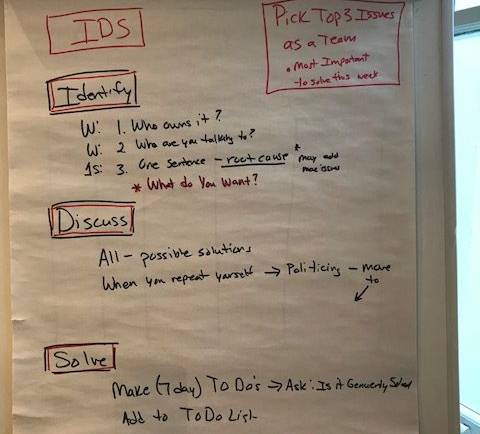In a recent EOS session, I had a revealing conversation with the business founder which highlights an issue many businesses face.
He said, “I’m used to making all the decisions myself, and it’s been an adjustment for me to include others in the decision-making process.”
Some founders find it hard to let go.
They are used to making quick decisions by themselves, as they did the early days of their business. They don’t appreciate they may get a better decision by consulting their leadership team.
To sum up just how much this change in thinking can help, the client I spoke to went on to say: “However, I think ultimately we’re making better decisions by me including the team.”
If you are the visionary, how can you do this better in your company?
How to identify, discuss and solve your issues
Including you leadership team in decision-making gives you the opportunity to uncover fresh perspectives on an issue using the experience and expertise in your business. This can lead to a better result, with alternative solutions being presented, and it creates a better buy-in from the team.
Level 10 meetings
If you’re rolling out EOS in your business, issues are discussed at weekly 90-minute Level 10 meetings. Sixty of the 90 minute meetings is spent working together to prioritise issues, identifying the top three which need to be solved that week, and then using “Identify, Discuss, Solve” (IDS) to solve them.
How IDS works
Identify: here we ask three questions – who owns the issue, who are they talking to on the leadership team and what do they want in one sentence. By asking these questions the goal is to get to the root cause of the issue.
For example, a client is upset because they have received an incorrect invoice. The head of sales owns an issue, and they’re talking to the head of finance, and what the head of sales wants is for the invoice to be corrected and the invoice process modified so the mistake doesn’t happen in the future.
Discuss: next the head of finance responds and discusses both the current situation and the process to be fixed.
Then ask any other leadership team members if they have anything else to add in relation to the issue. Once team members start to repeat themselves, we call it “politicking”, the meeting leader moves the discussion to the next step of “Solve’.
Solve: recap the solution and set To Dos, which are due in seven days at the next Level 10 meeting, for anyone who has an action. Finally, the meeting leader asks if this issue is generally solved, and you move onto the next issue.
Summary
By using IDS, teams have a system to follow so they don’t just discuss issues, they solve them. They get better results because they are getting everyone’s input and buy-in, with a deadline for the actions to happen.
By solving issues together, it helps the businesses to run more smoothly and put processes into place that ensure the same issues don’t keep recurring.
My clients tell me that the time they invest in the Level 10 meeting helps them to get more done and move the business forward.
Contact us if you want to find out how to apply EOS to your business. We offer a complimentary meeting to introduce the EOS to you along with your leadership team.

